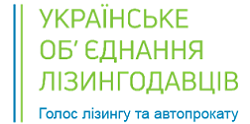
Dmytro Leonov, Chairman of the UAIB Council
The model of redistribution of regulatory powers, which was hastily adopted by the Verkhovna Rada last year to improve the implementation of the requirements of the Memorandum with the IMF, was not considered the best either among the expert community or among the majority of representatives of the non-banking sector.
The text of the draft law on “split” submitted by the previous President of Ukraine and edited by the previous parliament for four years became the law. Unfortunately, the expected big goal for which the “split” was accelerated, namely the signing of a new program of cooperation with the IMF, went to the archives together with the hastily assembled “technical” government. So, the goal went, and the “split” remained.
It is clear that the question of how to live further arose in the entire non-bank financial market. And the main decision-making center for six months has moved to the level of non-bank financial institutions.
The key question that every institution must answer is whether to stay in the market or not. However, such a question arose only in those financial institutions that “split” into the realm of regulatory powers of the NBU. For them, the regulatory burden inherent in the NBU’s policy is clearly significantly higher than in the Natskomfinposlug policy. For financial institutions of the insurance and non-bank credit market, the “split” is already in effect, and the consequences of its adoption are now tangible, but they are somewhat different for the insurance and credit segments.
Insurance consequences
Given the fact that the entire membership of Natskomfinposlug of its final term is formed exclusively of representatives of the insurance community, in recent years the regulation of this market has been, on the one hand, more professional and on the other – more “consensual”. However, the downside of this understanding between the regulator and the market was a more or less comfortable regulatory environment.
It is useless to expect the NBU, as a regulator, to have such a level of consensus with the market both in terms of forms and content of regulation. In addition, the standardization of insurance activities and insurance supervision at the level of both EU legislation and international documents in this area provides the National Bank with a wide range of opportunities to impose stricter requirements for insurance companies.
Insurance companies that are unsure of their successful operations under the supervision of the NBU will leave the market before the start of the “split”. This category may include both “scheme” and “captive” insurance companies, as well as just small financial institutions that will not see the further feasibility of doing business with the new ratio of income and expenses for its maintenance. At the same time, before the National Bank acquires regulatory powers, new insurance companies will try to enter the market in order to do so under loyal conditions. And among them will be not only completely new companies, but also those that are created to replace the “scheme”.
After the NBU acquires regulatory powers, the entry into the market of new insurance companies will stop, but will soon resume again, albeit much more slowly. It is likely that the ICs, which will remain on the market in the second half of 2020, will be able to work for about nine months (until the end of 2020 and the first quarter of 2021) – until the NBU monitors market performance and analyzes the reporting of individual insurers. Next, the National Bank will develop its own algorithms for terminating the activities of insurers, increasing the requirements for their transparency and management systems. After expanding the legal framework and analyzing the annual reports of insurers, the NBU will, of course, begin to withdraw from the market ICs that do not meet the criteria of “overall stability” of the market.
The redistribution and concentration of the insurance market will continue until approximately the middle of 2021, and, most likely, in favor of insurance companies with foreign capital. At the end of 2021, in all reporting documents, the insurance market will be characterized by the new regulator and international experts as “stable and transparent.” Due to the withdrawal of some insurers from the market during 2020-2021, there may even be some decline in statistical indicators of certain market segments, which can be adjusted, in particular, the devaluation of the hryvnia.
However, the NBU may give some impetus to the expansion of certain segments of its subordinate insurance market. First of all, it is credit risk insurance, which is still quite common, and with the concentration under the supervision of the NBU of both credit and insurance markets can become “conditionally mandatory” from the position of the regulator. The second segment – life insurance (“life” insurance). Although it can be conditionally called a competing insurance product for deposit products of the banking sector, the NBU can potentially both suppress it and develop it as an alternative mechanism for attracting citizens’ savings.
Credit prospects
As for the non-bank credit market, the situation here will be ambiguous and difficult. This is due to the significant fragmentation of this market by groups of individual financial services and 90% of the intersection of these services with identical services of banks. Apparently, the main issues of the Law on “Split” will be concentrated in this market, the severity of which will depend primarily on the subjective perception of the NBU as a regulator, not only the quality of provision, but also the general expediency of certain categories of financial institutions and their services. Ukraine’s “stable and transparent” banking system.
If the “bank-centric” view of the model of credit market development in the National Bank prevails, the phrase “who did not hide, I am not guilty” may become an inscription on the “gate” of this market.
Financial institutions that will not leave the market by July 2020 will be in a laboratory to test their viability by standards and requirements close to the existing banking regulation of similar financial services. The likelihood of such an approach will be a trap not only for non-bank credit institutions and consumers of their services, which will be “pushed” out of the market, but also for the credit market and the economy of Ukraine as a whole.
In the pursuit of the regulator for guaranteed stability of the non-banking credit market, it can be practically destroyed, despite the fact that the non-banking credit market now meets the needs of those consumers (primarily individuals and SMEs) who do not meet the requirements and standards of access to banking services.
Inadequate levels of regulatory pressure on non-bank credit institutions may lead to reduced access of individuals and SMEs to credit services and a significant decline in some market segments. Accordingly, instead of the normal market satisfaction of this demand by non-bank financial institutions, such small entities at the state level will be offered non-viable credit “ersatz products” with a social color such as “affordable loans for small businesses” or “affordable mortgages for young families.” The number of consumers of these state-sponsored services will obviously be limited and inconspicuous throughout the state.
At present, such “templates” that are not viable for Ukraine will be supplemented by various promises of “anti-quarantine” credit support for businesses and certain categories of citizens. It is clear that such products are bright as a political presentation, but it should be borne in mind that various such programs have failed at least twice since Ukraine’s independence, as they completely contradicted the available sources of state funding and restrictions on minimum requirements for their recipients. from the banking system.
The non-bank credit market still exists all over the world because in any country it meets the needs of society that do not fit into the objectively high standards and requirements for the stability of the banking system. Thus, it is now up to the NBU to find the regulator the political will to dialogue with the market or to hide from its participants behind bars of its “independence” and “regulatory capacity”.
Source
